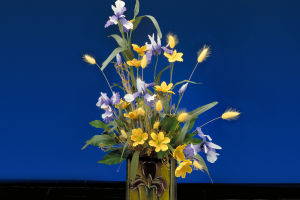Art is a powerful tool that goes beyond words and borders, connecting people through emotions and ideas. Whether it's painting, music, dance, or film, these artistic forms allow us to feel and understand the emotions and perspectives of others, creating a bridge between different cultures.
Painting, for example, uses color, lines, and composition to show an artist's unique view of the world. While Chinese ink paintings emphasize subtle emotions and poetic beauty, Western oil paintings highlight light and vibrant colors.
Though the styles are different, they both inspire a deep appreciation for life and beauty. Similarly, music transcends language. African drumbeats showcase energy and passion, while Indian classical music carries deep spiritual meaning. By experiencing these diverse art forms, we get closer to understanding and respecting different cultures.
Art Exchange: Building Understanding and Respect
Art exchange helps promote mutual understanding and respect among cultures. Through art festivals, exhibitions, and concerts, different cultures share their unique artistic styles and stories with a wider audience. Art festivals often gather artists from around the world, giving audiences the chance to witness and appreciate diverse cultural expressions. Engaging directly with these artists and learning about their inspirations help us better understand their cultural backgrounds.
Art Integration: Creating New Cultural Expressions
Art exchange is not only about sharing but also about blending and evolving. When artists from different cultures collaborate, they merge their unique styles, creating innovative works that reflect a fusion of traditions. For instance, modern music often blends traditional rhythms from different cultures, resulting in fresh, exciting genres that resonate globally. Similarly, Chinese ink painters who incorporate Western techniques create works that are both rooted in tradition and infused with modernity.
Art Education: Nurturing Cross-Cultural Skills
Art education plays a key role in enhancing cross-cultural understanding. By exposing learners to a variety of artistic styles and traditions, it broadens their cultural awareness and appreciation. Art education also nurtures creativity and imagination, which are essential for open-mindedness and adaptability in diverse environments. In art classes, students often work with peers from different backgrounds, developing communication and collaboration skills that are valuable in cross-cultural settings.
Art serves as a bridge that connects different cultures, fostering understanding and respect. Through art exchange and education, we not only celebrate diversity but also cultivate a more inclusive global community. As we continue to explore and integrate art from different cultures, we take steps toward building a world where differences are celebrated and unity is strengthened.


